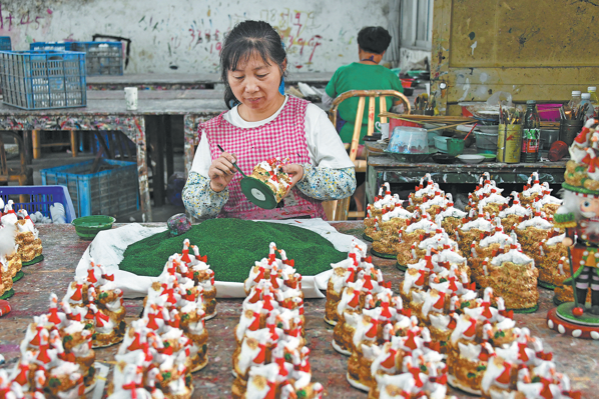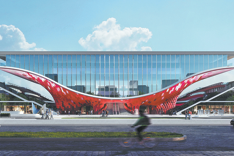Shanghai hosts a master class in French art

Artworks by 29 modern masters of French art, such as Pablo Picasso, Claude Monet and Henri Matisse, are on exhibition at Bund One Art Museum in Shanghai from Oct 16 to Feb 20.
From Monet, Bonnard to Matisse: Masterpieces of Modern French Painting consists of 80 authentic artworks from the collection of the Bemberg Foundation, a nonprofit institution in France. All of the paintings are on public exhibition in the Chinese mainland for the first time. Covering many art genres such as Impressionism, Symbolism, Cubism and so on, the exhibition is aimed at presenting the development trajectory of French modern painting from the end of the 19th century to the beginning of the 20th century, according to Philippe Cros, curator and director of the Bemberg Foundation.
Georges Bemberg (1915-2011) was born in Argentina and grew up in Paris. An avid lover of art and beauty, Bemberg bought his first artwork, a painting by Camille Pissarro, when he was a student at Harvard University.
Bemberg accumulated one of the largest private art collections in Europe, including paintings, drawings, and bronzes dating from the Renaissance to the 20th century. He was particularly drawn to the artists of the modern French schools, and especially liked the works of Pierre Bonnard (1867-1947), an artist that took an important position in the development of art history.
Bonnard was a founding member of Les Nabis, meaning the Prophets. The group is part of the Symbolist school that abandoned three-dimensional modeling in favor of flat color areas. Bonnard however was not interested in the obscure and mystic Symbolist subjects. Instead he was fascinated by the scenes of daily life, for which he has been called an Intimist.
Bonnard's paintings with his stylized decorative qualities and bold use of colors, are in recent years regaining critical attention and the exhibition features about 30 works by the artist. One of the paintings Seascape, shows a view of the bay of Cannes with the Esterel Mountains in the background. In this work the use of vivid colors pulls the background to the front, and the top two-thirds of the composition are organized in horizontal strips. "The sea, therefore, becomes the work's true subject," Cros wrote for the introduction of the artwork.
All the important art schools are represented at the exhibition, from Impressionism, to Pointillism, Symbolism, Nabism, Fauvism, Cubism and so on. In the past few years Impressionism masters such as Monet have had multiple exhibitions in the city.
In this exhibition, a portrait Monet created for his son Jean in 1869 touched the tender parts of viewers' heart in Shanghai. "I remember seeing large paintings of water lilies, and the sceneries of Monet's gardens at Giverny," said Zhang Man, a visitor to the exhibition on the opening day. "This time we see more of Monet's landscapes, and I am especially happy to see clearly how the French art developed after Monet and Impressionism."
The same exhibition, with some paintings changed, was on tour in Houston in the United States earlier this year, and in China it will be presented in Shanghai alone, according to Xie Dingwei, president of Tix Media, and cofounder of the Bund One Art Museum.
Visitors will see another exhibition of classical western art, if they walk up one more level to the third story of the museum. From Renaissance to the 19th Century: Masterpieces from the Accademia Carrara, Bergamo, Italy, is going on from Aug 12 to Jan 3.
IF YOU GO
From Monet, Bonnard to Matisse: Masterpieces of Modern French Painting
10 am-6 pm (last entry ends by 5:30 pm) Oct 16-Feb 22, 2022
Bund One Art Museum, 2&3F, 1, Zhongshan No.1 Road East, Huangpu district Shanghai
021-6330-6717






Today's Top News
- China holds central rural work conference
- President Xi to deliver New Year's message to ring in 2026
- Xi's diplomacy in 2025: Shedding light on a world at crossroads
- China to apply lower import tariff rates to unleash market potential
- China proves to be active and reliable mediator
- Three-party talks help to restore peace






























